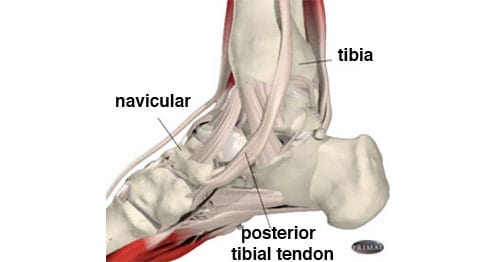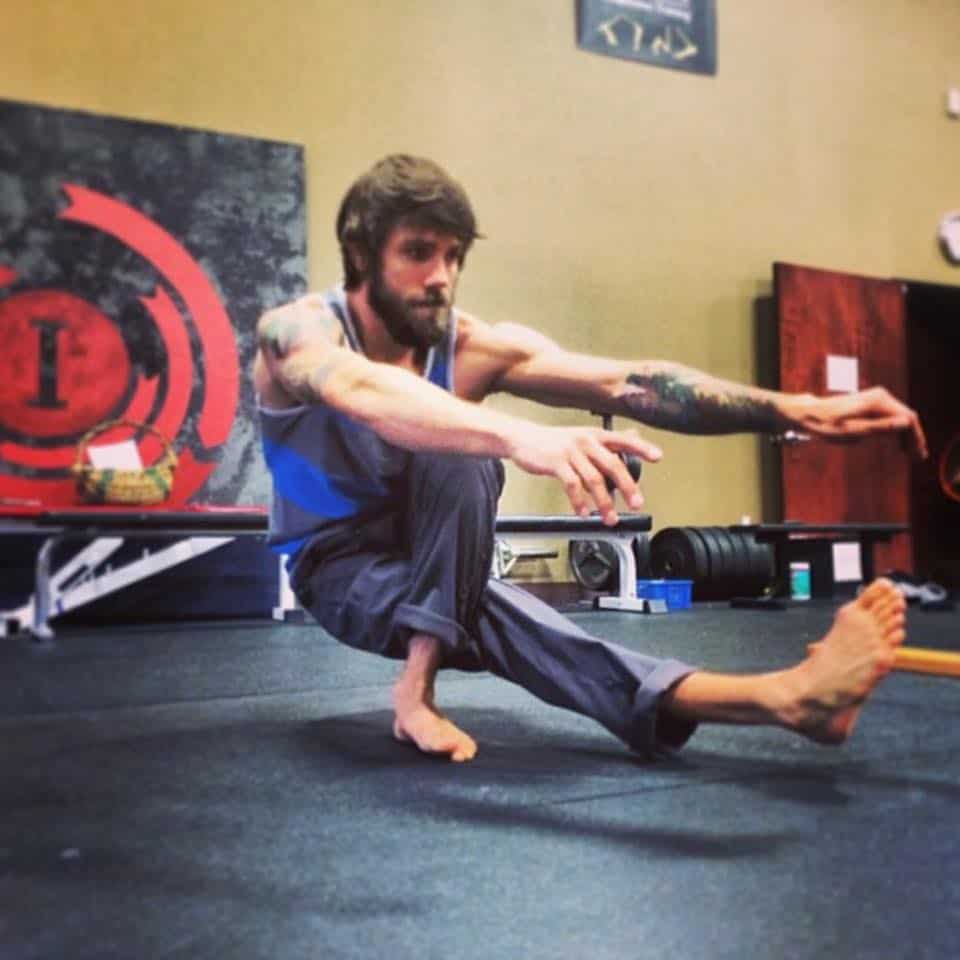The only mental to physical bridge I will use in this post is that when your movement and your life are aligned, when they reflect the same themes and sentiments, you cannot help but see application and connection to everywhere… Read more ›
Asymmetry. Up Leg. Compression. Push Down. Space. Rotational Organization. These all describe the physics of one half of the body accepting load, and one half of the body avoiding load. The first time I wrote about this, I referred to… Read more ›
Oh, the mighty pigeon toe. Such a strange little insurgent, and yet, it exists peacefully all around us. Where does it come from and how does it form? Does it afflict one leg or both? Is it the tibia or… Read more ›
In part 1, I suggested that using the knee as gas instead of brakes could help free up the knee for motion and elicit the hips and ankle-foot as stabilizers. For folks with chronic pain, however, their nervous system likely… Read more ›
There are three hinges on the feature photo door. It’s a strong front door, solid and meant to take some battering. The cheaper, lighter, all-have-problems-closing-and-opening doors inside the house have only two hinges. Weight-load divided by two, or weight-load divided… Read more ›
Part One looks at identifying each leg and how each prioritizes a different foot arch. Directional Bias: Perpendicular vs. Parallel. Up leg works the foward and back (parallel to ground). Down leg works the up and down (perpendicular… Read more ›
While walking through the streets of Europe last Spring, Adarian Barr wondered why his feet felt so good. He traced it back to the cobblestones. The lift, the variability, the multiple points of potential folding. This was the impetus behind… Read more ›
When new words are introduced, we tend to react as if they make things more complicated. We already know. We already have an understanding on what the terms we already use mean. Why would we change? We change when we are… Read more ›
Pairs. Roles. Asymmetry. The body knows and the body has ways. Understanding the differences between the halves helps you appreciate them. One side isn’t ‘good’. The other isn’t ‘bad’. They hold a function within the system. Here’s a big picture… Read more ›
Flexion and extension. Compression and Suspension. There are pairs that govern movement, both globally and locally. The system and its parts act to pull apart and come together. Posture, moving fast, and any sort of training or exercise is versed… Read more ›
This piece serves as the follow up to How To Push Down. When we are talking about compression, we are also talking about tension. It is the interaction of these two push-pulls that creates suspension. Otherwise everything would collapse. … Read more ›
My left leg has some problems. I could fill in the whys with any number of stories — the many ankle sprains during my athletic career, the torn and hamstring-repaired ACL, the pigeon toe I gave myself because of a… Read more ›
Adarian Barr does this thing. Well, first he does his thing — take a snapshot of what is going on in a way that only he seems to notice. Then he’ll send it to me without words and see what I… Read more ›
This post serves as a follow up to: A Path Towards Harm. Otherwise titled: The things I did wrong when I didn’t pay attention or have compassionate patience. The tag to this blog used to read, “fix yourself.” But… Read more ›
Some context. I have been learning to be sensitive to signals of and mitigate pain for about a decade now. My training revolves around feeling things out, noticing any off-ness, spending some time and attention there, and finishing the session… Read more ›
Push down. Seems simple enough. Intuitive. But I got it wrong. I got it wrong because my posture and mechanics favored a front-side dominance. (Quad-dominant folks tend to also fall into this category.) The knee bend, rounded shoulders, and dropped… Read more ›
This post serves as a companion piece to A Non-Central Axis. Where it showed you ways to identify a shifted midline, the following hopes to show how pulling to the right or left affects performance. The first thing to… Read more ›
Everything I know about the transverse arch, I owe to Adarian Barr. The following is my attempt to take his words and concepts and relate them to my own body and understanding. It is, in effect, my translation. The layers… Read more ›
This hurts. The most common reaction is to stop using it or doing that. It’s even the advice of many medical professionals. Rest, it is assumed, is a cure all. But what happens when this magic pill doesn’t work? When… Read more ›
The low gait might be the truest test of healthy knees. It requires full flexion under full bodyweight while pulling the center of mass. A single knee is responsible for stabilizing load while the feet and ankles pivot and reposition.… Read more ›
Balance is a movement intelligence. It relies on systemic interdependence — that your parts work well enough and that the body can efficiently execute interpretations from the brain. Creating feet that grip and then utilizing them in skill-based, eyes closed situations bridges… Read more ›
Joint ‘popping’ is a curious thing. It alarms without hurting. Especially when you realize it wasn’t there before. You notice something is different when you do that particular thing in that particular way. The different becomes ‘less than’ when… Read more ›
Doing without knowing. Playing, creating, learning. Adjusting and adapting. Describing Fighting Monkey is an act in organizing verbs. Everything overlaps and intertwines and is a wonder. The only certainty you are left with is that you have experienced something good… Read more ›
This post serves as a companion piece to Pain Exploration: Medial Knee. It picks up right where it left off, with manipulations of the ankle, foot, and toes. A low sit with the heel up and toes extended (an expression… Read more ›
Increasing dorsiflexion is a popular yet frustrating goal. Getting the ankles to do more lessens the strain on the knees, and is an important factor in being able to drop into a deep squat — an often used marker of overall… Read more ›
For about two months, I’ve had some chronic discomfort in my left knee. On a scale of 1-10, with ’10’ being agony and ‘1’ being noticeable/annoying, it oscillates between 1 and 4. Though this might be thought of as acceptable… Read more ›
The tip toes position is an assessment of toes, feet, and ankle control. Balance comes from joint stacking. The push off when we walk comes from a high heel. A toe point or push is required with reaching. Loaded plantar… Read more ›
If you’re stuck in a movement plateau, changing the direction in which you impart force into a joint will often translate into greater mobility. The body reacts in function what is demanded of it by stress. Andreo Spina describes this… Read more ›
Systemized by functional range conditioning (FRC), lift-offs are an ingenious way to focus on stability to achieve gains in mobility. Lift-offs are essentially lever tighteners. You place yourself in a supported end-range position, ‘screw-in’ the limb connection to the torso,… Read more ›
In part one of this series, we focused on HOW to create an arch or shortfoot position. Here’s how you can pattern it into your motor subconscious: 1. Single Leg Balance Sequence Create shortfoot and hold throughout the duration. … Read more ›
The feet are the first inputs to the brain. They’ve got proprioceptors all over the place. They allow for adaptation, unlock the knee and hip, and promote anticipation before reaction. Shoes kill these gifts. Be barefoot when you train… Read more ›
The more I work with folks to teach proper foot function, the more I am drawn to the toes. Arching, gripping, and pushing are toe driven movements. The toes feel and sense the ground, giving it’s feedback to the feet… Read more ›
The source of this information is three months or roughly 100 hours of an art school Physical Education class. It is an evolving process of getting 40 kids first period to prep their ankles and feet for movement and game… Read more ›
Plantar fasciitis is an inflammation of the ligaments and/or muscles on the bottom of the feet. It is typically caused by ‘overuse’… in a repetitive, dysfunctional pattern. photo credit : braceability.com It is a common injury in runners or people… Read more ›
Can you have one flat (pronated) foot and one regular foot? Absolutely. For a variety of reasons. Personally, I always lean on my right foot, and I blew out my left knee which meant I had several YEARS of training… Read more ›
I can’t help but notice people’s movement patterns as I walk. You’d be stunned by the number of high schoolers busting out of the inside of their Tom’s. It’s an interesting enigma. Nobody ever teaches you the proper mechanics of… Read more ›
